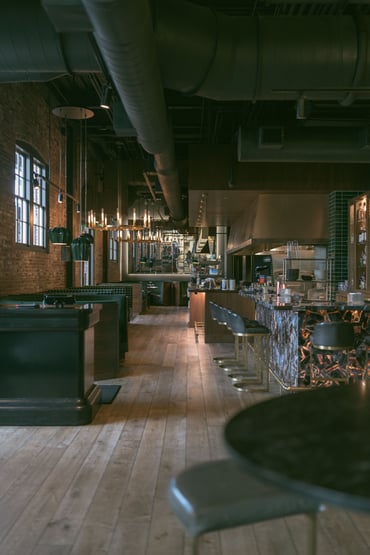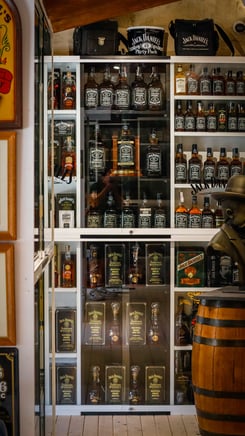Efficient inventory management is crucial for the smooth operation of any golf country club. Discover how the Scannabar app can revolutionize your inventory processes and enhance your club's hospitality experience.
Enhance Efficiency and Accuracy with Real-Time Inventory Tracking
Implementing real-time inventory tracking with the Scannabar app can significantly enhance the efficiency and accuracy of your golf country club's inventory management. By utilizing cutting-edge barcode scanning technology, Scannabar allows you to instantly update inventory data as items are received, used, or sold.
This real-time visibility ensures that your inventory records are always up-to-date, reducing the risk of human error and enabling your staff to make informed decisions quickly. No more guessing about current stock levels or spending hours on manual counts—Scannabar keeps everything accurate and streamlined.
Reduce Waste and Optimize Stock Levels
One of the biggest challenges in inventory management is balancing stock levels to minimize waste while ensuring sufficient supply. Scannabar helps you achieve this balance by providing detailed insights into inventory usage patterns and trends.
With Scannabar, you can easily identify slow-moving items and adjust orders accordingly, preventing overstocking and reducing waste. Additionally, the app's predictive analytics can help you anticipate demand fluctuations, ensuring that you always have the right amount of stock on hand to meet your members' needs.
Streamlined Ordering and Reordering Processes
Scannabar simplifies the ordering and reordering process with its intuitive interface and automated features. By setting up reorder points for each item, the app can automatically generate purchase orders when stock levels fall below a specified threshold.
This automation not only saves time but also reduces the likelihood of stockouts and over-ordering. Your staff can focus on providing excellent service to your members, knowing that Scannabar has the inventory management under control.
Improve Financial Management and Reporting
Effective inventory management is essential for accurate financial reporting and budgeting. Scannabar provides comprehensive reporting tools that give you a clear picture of your inventory costs, usage, and value.
These insights allow you to make informed financial decisions, optimize your budget, and identify opportunities for cost savings. With Scannabar, you can easily generate detailed reports for audits, financial reviews, and strategic planning, ensuring your club's financial health remains robust.
Elevate Member Experience with Better Stock Availability
At a golf country club, member satisfaction is paramount. Ensuring that popular items, such as golf balls, apparel, and refreshments, are always in stock can significantly enhance the member experience.
Scannabar helps you maintain optimal stock levels, so your members never have to face disappointment due to out-of-stock items. By keeping your inventory well-managed and readily available, you can provide a seamless and enjoyable experience for all your members, boosting their loyalty and satisfaction.

 Streamlining Inventory Management with Scannabar
Streamlining Inventory Management with Scannabar In the fast-evolving landscape of bars and nightclubs, staying ahead of the competition requires a strategic embrace of technology. The quest for the Best Liquor Inventory App and the Best Bar Inventory App has become integral to achieving optimal liquor and bar control. This article delves into the importance of these apps in fostering efficiency, reducing losses, and establishing a robust foundation for success in the dynamic world of nightlife.
In the fast-evolving landscape of bars and nightclubs, staying ahead of the competition requires a strategic embrace of technology. The quest for the Best Liquor Inventory App and the Best Bar Inventory App has become integral to achieving optimal liquor and bar control. This article delves into the importance of these apps in fostering efficiency, reducing losses, and establishing a robust foundation for success in the dynamic world of nightlife.
 Bar inventory management can present several challenges that require effective solutions to ensure accurate tracking and control of inventory, especially within a "bar inventory system" and "liquor inventory system." Let's delve into some common challenges and their solutions in bar inventory management.
Bar inventory management can present several challenges that require effective solutions to ensure accurate tracking and control of inventory, especially within a "bar inventory system" and "liquor inventory system." Let's delve into some common challenges and their solutions in bar inventory management.
 Tracking and managing liquor inventory is a critical aspect of running a successful bar. Effective management ensures accurate stock levels, reduces costs, prevents theft, and optimizes profitability. Let's explore some essential strategies for tracking and managing liquor inventory within a bar inventory system and liquor inventory system.
Tracking and managing liquor inventory is a critical aspect of running a successful bar. Effective management ensures accurate stock levels, reduces costs, prevents theft, and optimizes profitability. Let's explore some essential strategies for tracking and managing liquor inventory within a bar inventory system and liquor inventory system. When it comes to running a successful bar, having the right inventory items and supplies is crucial. A well-stocked bar ensures smooth operations, customer satisfaction, and profitability. Let's explore some essential items and supplies that play a vital role in bar inventory systems and liquor inventory systems.
When it comes to running a successful bar, having the right inventory items and supplies is crucial. A well-stocked bar ensures smooth operations, customer satisfaction, and profitability. Let's explore some essential items and supplies that play a vital role in bar inventory systems and liquor inventory systems. When it comes to conducting bar inventory, there are several effective methods that establishments can employ to ensure accurate tracking and control of their inventory, particularly in terms of "bar inventory" and "liquor inventory." Let's explore some of these methods in detail:
When it comes to conducting bar inventory, there are several effective methods that establishments can employ to ensure accurate tracking and control of their inventory, particularly in terms of "bar inventory" and "liquor inventory." Let's explore some of these methods in detail: There are countless reasons why one should be on top of their liquor inventory. Being in the business now for over 10 years here are the 4 most prominent points I have seen during that time.
There are countless reasons why one should be on top of their liquor inventory. Being in the business now for over 10 years here are the 4 most prominent points I have seen during that time.
